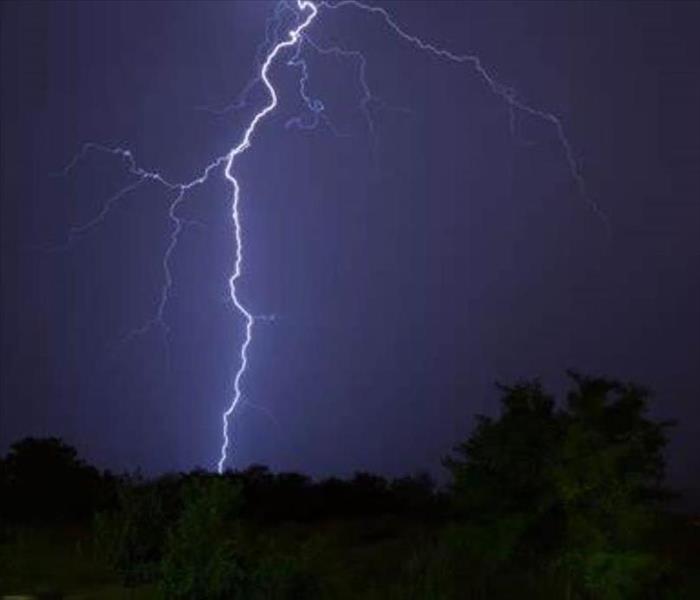When there's Thunder there's Lightning
3/11/2020 (Permalink)
Lightning causes thunder, so if you hear thunder, there is lightning nearby. And since lightning can strike as far as 10 miles from a thunderstorm, it is important to try and figure out how far lightning is far you and your family, instead of simply waiting for it to start raining until you seek shelter.
How do you figure out how far the lightning is? A general rule of thumb is that you can figure out the distance between you and a lightning strike if you count the seconds in between seeing a lightning strike, hearing thunder, and then divide the time by 5. So if you count 10 seconds in between a lightning strike and a thunderclap, then the lightning is only about 2 miles away and you should seek shelter in a car or building.
In general, you should make sure that you can count to at least 30 in between seeing lightning strikes and hearing thunder, which means that the lightning is about 6 miles away. And to be safe, stay indoors for at least 30 minutes after hearing thunder for the last time, which should give the thunderstorm plenty of time to move out of your area.
Other tips to keep safe when lightning is nearby include:
- Seek shelter inside a fully enclosed building that has wiring or plumbing, which would usually not include a shed, open garage, or pavilion.
- Seek shelter in a hard-topped car, truck, or van, etc., if a safe building is not available
- If you can't get inside a safe building or vehicle, seek shelter in a low-lying area that is not prone to flash flooding, squatting low to the ground, and stay away from tall trees or metal poles.
- Avoid riding on anything metal during a severe thunderstorm with close lightning, such as a bicycle or golf cart.
- Stay off corded phones and avoid taking a bath or shower, as telephone lines and metal pipes can conduct electricity if your home is struck by lightning.
- Seek emergency medical attention to you see someone hit by lightning and start first aid, including CPR if necessary.
Although there are now apps on smartphones, like WeatherBug's Spark that can warn you when lightning is near, just remember the old safety slogan, "When thunder roars, go indoors!"



 24/7 Emergency Service
24/7 Emergency Service
